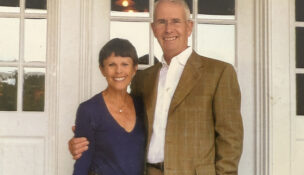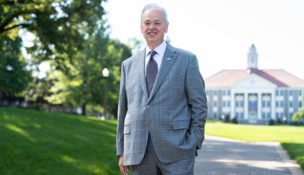Innovative research
Engineering school projects explore a wide range of fields
Innovative research
Engineering school projects explore a wide range of fields
Virginia’s engineering schools are involved in research projects ranging from measuring the safety of football helmets to creating thinner, more efficient solar panels to fuel the world’s increasing appetite for renewable energy.
The diversity of the research makes you wonder: What’s next? For inquiring minds, every aspect of human endeavor seems to be fair game.
For example, Virginia Tech’s School of Biomedical Engineering and Sciences has become widely influential for groundbreaking efforts to rank football helmets on their ability to reduce concussion risks.
The school’s STAR (Summation of Tests for the Analysis of Risk) rating system grades helmets based on how well they absorb impacts. Five stars protect the best, one star the least.
The system has become the gold standard for companies making football helmets, as well as for an untold number of fans and families who want players protected from head injuries.
“Five or six years ago, nobody was talking about this stuff,” says Stefan Duma, the school’s director. Now, he says, organizations ranging from the National Football League to organized youth football teams — basically any group in which someone straps on a helmet — have become interested in protecting players from concussions.
Virginia Tech’s efforts to gather head-impact data began more than a decade ago. Duma and his team were working on an automobile safety project and compiling head impact data using sensors placed in the helmets of Virginia Tech’s football squads.
During that period, a university equipment manager asked Duma if he could recommend the best helmet for players on the team.
That question helped put Duma on a journey that has brought Virginia Tech widespread acclaim and attention in the area of helmet safety.
In the testing program, helmets are dropped from various heights ranging from a few inches to several feet. The results have often been startling.
Among the findings: “Moving from a 1-star to a 4-star can reduce risk by 50 percent,” Duma says.
He says a helmet’s star rating now is the first question most coaches and parents ask before making a purchase.
Tech also recently completed testing of a variety of hockey helmets. “We’re going on to lacrosse, baseball, bicycling, all kinds of helmeting sports,” Duma says.
Transferring knowledge
When Peter Beling starts talking about the Microsoft Kinect, you might be tempted to think he is explaining a new video game. Kinect, after all, is a motion-sensing device used in video games.
But Beling, an associate professor of systems and information engineering at the University of Virginia, has a much more serious intent. He’s using the Kinect to track workers’ movements, especially in manufacturing, in an effort to correlate specific actions with performance and quality.
As part of a project sponsored by the Prince George-based Commonwealth Center for Advanced Manufacturing (CCAM), Beling’s efforts are focused on a nagging industry problem: “How do you transfer knowledge to a new generation from an old generation before you lose them to retirement?” Beling explains.
The difference between how really good workers do a job and how average workers do the same job can be determined only by observation, he says. “You can only understand what’s happening if you’re prepared to watch all the time,” Beling says. “And you can only watch all the time with a sensor and a computer.”
If his project yields the data he is hoping for, Beling says, it will bring companies one step closer to understanding how to improve the quality of their products and processes, as well as how to pass on those skills to a new generation.
Better health through big data
Why do some people heal faster than others? That may not sound like the job for a computer scientist, but it is at the Virginia Commonwealth University School of Engineering.
Tomasz Arodz, a computer scientist with a background in biotechnology, is using computational models and algorithms in the pursuit of better medical treatments.
“I have ongoing collaboration [at the VCU Medical Center that includes Dr. Robert Diegelmann in the Department of Biochemistry and Molecular Biology] that is focused on healing of wounds. Some heal very quickly.
Some take longer to heal. What are the molecular differences?” Arodz asks.
That’s what he’s trying to find out by collecting huge amounts of data and then analyzing that information with the aid of computers.
Arodz’s work with the wound specialist is part of an expanding collaboration between VCU’s engineering and medical schools.
Arodz uses big data not only to find sets of genes altered by disease but also to discover pathways to help biologists understand what underlies various pathologies.
He adds that computer scientists increasingly collaborate in the biological and medical fields because of the incredible increase in the amount of information becoming available in those areas. “If you want to know what is going on, you have to have algorithmic methods,” he says.
Sunny outlook for solar
Sylvain X. Marsillac, director of the Virginia Institute for Photovoltaics at Old Dominion University, believes he is in the right field at the right time.
“The solar market has had continuous growth by more than 40 percent for the last 20 years, even during the recession,” says Marsillac, who has a 5-kilowatt array of solar panels on his house.
He believes that solar energy has helped change the landscape of renewable energy worldwide. And now, he says, the cost per watt of solar has fallen enough to compete with several forms of fossil fuels.
“The price of solar has dramatically decreased, with modules going from more than five dollars 20 years go to less than one dollar today,” Marsillac says.
His particular focus is the creation of ultra-thin-film solar cells, the ones that can provide portable solar power to military units, or for satellites whose solar cells must be as light and flexible as possible.
Marsillac notes that the efficiency of solar cells has increased even as their cost has dropped. “These two main parameters, cost and efficiency, are the ones we focus our research on,” he says.
On a scale of 100 percent, efficiency has jumped on average from 13 percent when he entered the field to 21 percent today. Some solar panels provide even higher efficiencies, in the 40-plus percent range, but they tend to be complicated and too costly for residential installation.
“Another potential paradigm is the rise of cheaper storage systems, via Tesla’s new battery plant [being built near Reno, Nev.], for example, which will then allow for the solar energy to be stored during the day and used at night,” Marsillac adds.
Tesla, a company best known for its electric vehicles, recently introduced a line of stackable batteries for home and industry. Its new Powerwall, a wall-mounted storage unit, can hold 10 kilowatt hours of electric energy.
Solar panels can’t produce energy at night, and that has been one of their drawbacks, Marsillac says. But as more effective ways of storing the energy of sunlight come to the market, solar energy could gain momentum. “It’s an exciting time to be in solar energy research,” Marsillac says.
-
















